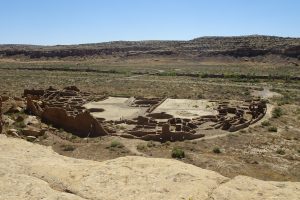4-6 Sep: After leaving Lowry & Kyle’s, we headed south to the Colorado Springs area to visit Amy’s brother Bill, who had recently moved there with his wife Deb from Spokane, Wash., to be near their daughter Hannah, son-in-law Scott, and baby granddaughter Adelai, Corwyn’s newest second cousin. Lowry and Corwyn traveled with us, with Kyle to join us a day later. Our trip took longer than expected due to (1) an expensive repair to address an issue diagnosed by a Toyota dealership after dashboard warning lights came on during the drive and (2) very rough unpaved roads into the Pike National Forest campground that we had selected. The Meadows Ridge campground was very scenic and quiet, with a view of Pike’s Peak, but we decided to relocate the next day to a much more accessible private campground.
We met Bill & Deb and Hannah & Scott at the Cheyenne Mountain Zoo in Colorado Springs the next day. It was so hot that one of the memorable things about the zoo that day was pausing often to stop in front of misting machines that cooled off people passing by. The zoo has over a dozen giraffes, and the walkways past them are at giraffe head level, so onlookers are really close to them. The Lone Duck Campground (our new one) had a pool, which was well appreciated on this hot day.


Before leaving the area the next day, we visited Bill & Deb at their new home, a very attractive and fairly new town house with a high deck out back and a large guest suite in the walk-out basement, which Hannah & Scott recently moved into. Bill took Kyle, Paul, and Amy on a bike ride up along Cottonwood Creek on part of the city’s extensive greenway bike path network.































